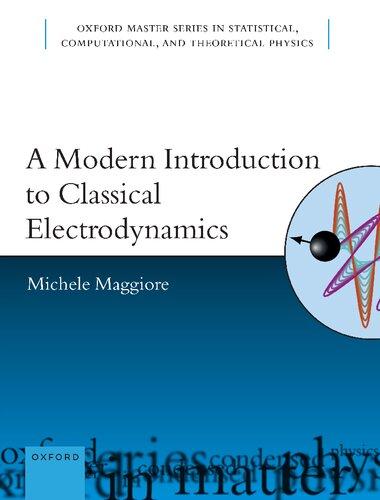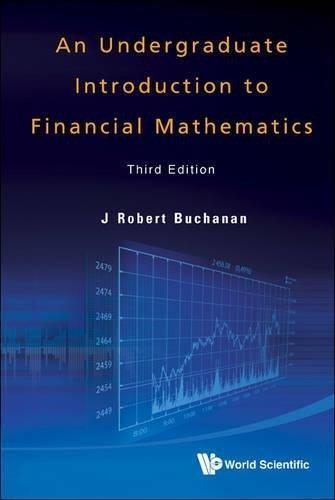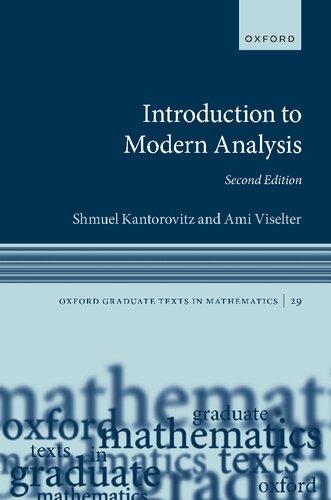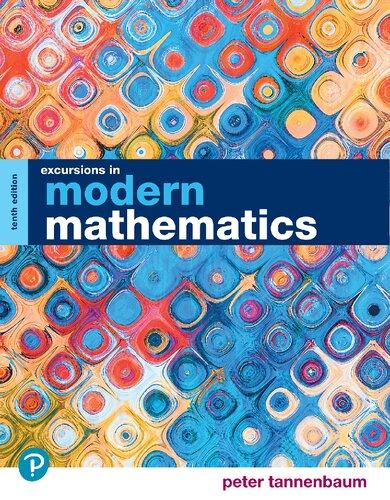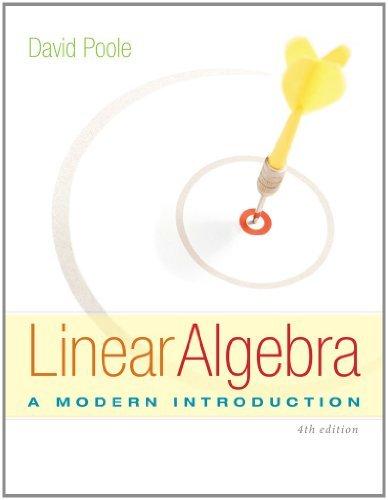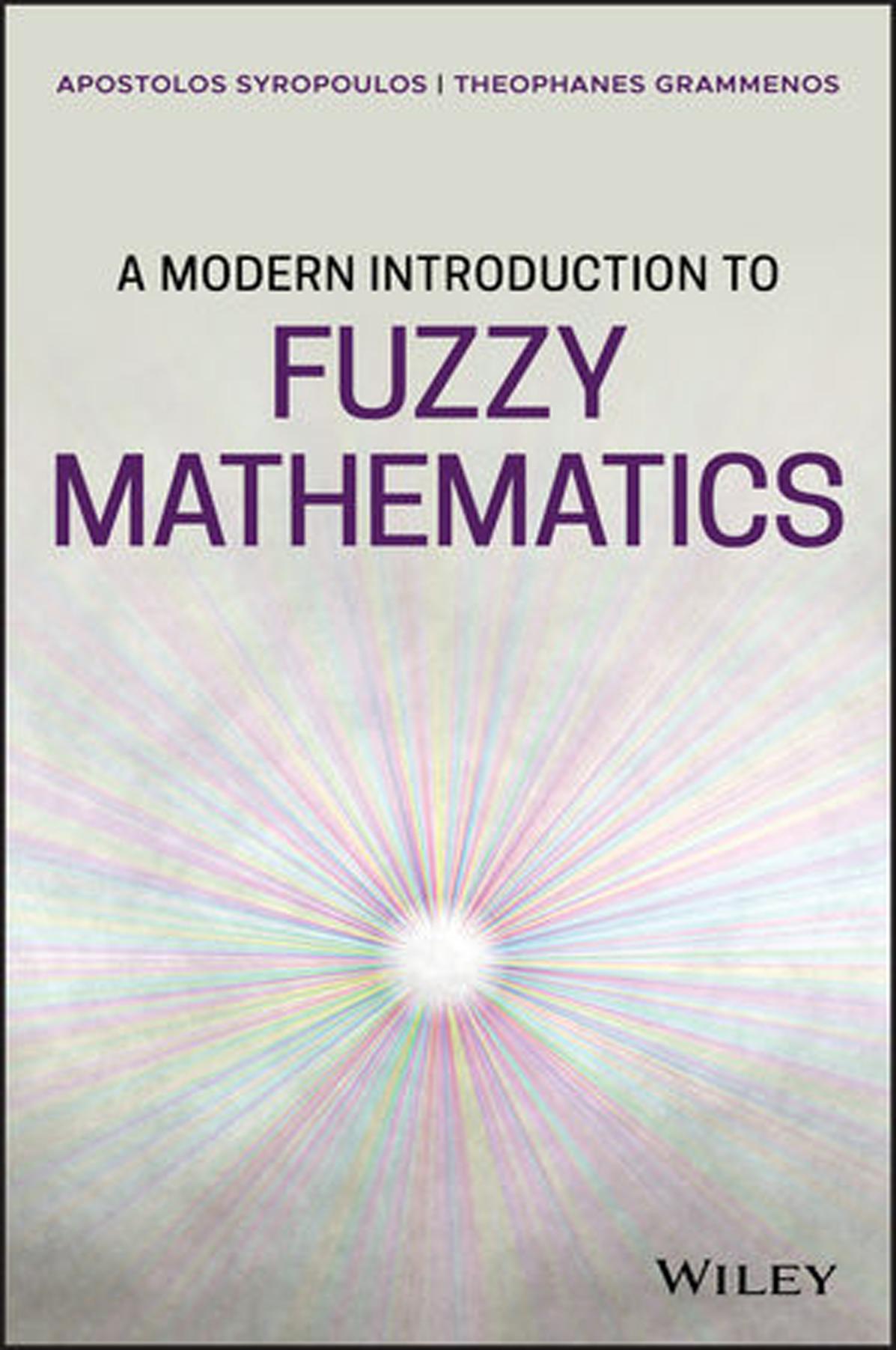AModernIntroductiontoFuzzy
Mathematics
ApostolosSyropoulos
TheophanesGrammenos
NewYork2020
Thiseditionfirstpublished2020
©2020JohnWiley&Sons,Inc
Allrightsreserved.Nopartofthispublicationmaybereproduced,storedinaretrievalsystem, ortransmitted,inanyformorbyanymeans,electronic,mechanical,photocopying,recordingor otherwise,exceptaspermittedbylaw.Adviceonhowtoobtainpermissiontoreusematerial fromthistitleisavailableathttp://www.wiley.com/go/permissions.
TherightofApostolosSyropoulosandTheophanesGrammenostobeidentifiedastheauthors ofthisworkhasbeenassertedinaccordancewithlaw.
RegisteredOffice
JohnWiley&Sons,Inc.,111RiverStreet,Hoboken,NJ07030,USA
EditorialOffice 111RiverStreet,Hoboken,NJ07030,USA
Fordetailsofourglobaleditorialoffices,customerservices,andmoreinformationaboutWiley productsvisitusatwww.wiley.com.
Wileyalsopublishesitsbooksinavarietyofelectronicformatsandbyprint-on-demand.Some contentthatappearsinstandardprintversionsofthisbookmaynotbeavailableinother formats.
LimitofLiability/DisclaimerofWarranty
Whilethepublisherandauthorshaveusedtheirbesteffortsinpreparingthiswork,theymake norepresentationsorwarrantieswithrespecttotheaccuracyorcompletenessofthecontentsof thisworkandspecificallydisclaimallwarranties,includingwithoutlimitationanyimplied warrantiesofmerchantabilityorfitnessforaparticularpurpose.Nowarrantymaybecreatedor extendedbysalesrepresentatives,writtensalesmaterialsorpromotionalstatementsforthis work.Thefactthatanorganization,website,orproductisreferredtointhisworkasacitation and/orpotentialsourceoffurtherinformationdoesnotmeanthatthepublisherandauthors endorsetheinformationorservicestheorganization,website,orproductmayprovideor recommendationsitmaymake.Thisworkissoldwiththeunderstandingthatthepublisheris notengagedinrenderingprofessionalservices.Theadviceandstrategiescontainedhereinmay notbesuitableforyoursituation.Youshouldconsultwithaspecialistwhereappropriate. Further,readersshouldbeawarethatwebsiteslistedinthisworkmayhavechangedor disappearedbetweenwhenthisworkwaswrittenandwhenitisread.Neitherthepublishernor authorsshallbeliableforanylossofprofitoranyothercommercialdamages,includingbutnot limitedtospecial,incidental,consequential,orotherdamages.
LibraryofCongressCataloging-in-PublicationData
Names:Syropoulos,Apostolos,author.
Title:Amodernintroductiontofuzzymathematics/ApostolosSyropoulos, TheophanesGrammenos.
Description:Firstedition.|NewYork:Wiley,2020.|Includes bibliographicalreferencesandindex.
Identifiers:LCCN2020004300(print)|LCCN2020004301(ebook)|ISBN 9781119445289(cloth)|ISBN9781119445302(adobepdf)|ISBN 9781119445296(epub)
Subjects:LCSH:Fuzzymathematics.
Classification:LCCQA248.5.S972020(print)|LCCQA248.5(ebook)|DDC 511.3/13—dc23
LCrecordavailableathttps://lccn.loc.gov/2020004300
LCebookrecordavailableathttps://lccn.loc.gov/2020004301
CoverDesign:Wiley
CoverImage:CourtesyofApostolosSyropoulos
Setin9.5/12.5ptSTIXTwoTextbySPiGlobal,Chennai,India
PrintedintheUnitedStatesofAmerica
10987654321
TomysonDemetrios-Georgios, toKoulaandLinda. ApostolosSyropoulos
TomywifeAndromacheforher endurance,tolerance,andcare. TheophanesGrammenos
Contents
Preface xiii
Acknowledgments xvii
1Introduction 1
1.1WhatIsVagueness? 1
1.2Vagueness,Ambiguity,Uncertainty,etc. 4
1.3VaguenessandFuzzyMathematics 6 Exercises 8
2FuzzySetsandTheirOperations 11
2.1AlgebrasofTruthValues 11
2.1.1Posets 12
2.1.2Lattices 13
2.1.3Frames 14
2.2Zadeh’sFuzzySets 14
2.3 �� -CutsofFuzzySets 19
2.4Interval-valuedandType2FuzzySets 21
2.5TriangularNormsandConorms 24
2.6 L-fuzzySets 26
2.7“Intuitionistic”FuzzySetsandTheirExtensions 27
2.8TheExtensionPrinciple 32
2.9*Boolean-ValuedSets 34
2.10*AxiomaticFuzzySetTheory 36 Exercises 37
3FuzzyNumbersandTheirArithmetic 39
3.1FuzzyNumbers 39
3.1.1TriangularFuzzyNumbers 40
3.1.2TrapezoidalFuzzyNumbers 41
3.1.3GaussianFuzzyNumbers 42
3.1.4QuadraticFuzzyNumbers 43
3.1.5ExponentialFuzzyNumbers 44
3.1.6 L–R FuzzyNumbers 44
3.1.7GeneralizedFuzzyNumbers 46
3.2ArithmeticofFuzzyNumbers 46
3.2.1IntervalArithmetic 47
3.2.2IntervalArithmeticand �� -Cuts 47
3.2.3FuzzyArithmeticandtheExtensionPrinciple 48
3.2.4FuzzyArithmeticofTriangularFuzzyNumbers 49
3.2.5FuzzyArithmeticofGeneralizedFuzzyNumbers 49
3.2.6ComparingFuzzyNumbers 51
3.3LinguisticVariables 54
3.4FuzzyEquations 55
3.4.1SolvingtheFuzzyEquation A ⋅ X + B = C55
3.4.1.1TheClassicalMethod 55
3.4.1.2TheExtensionPrincipleMethod 56
3.4.1.3The �� -CutsMethod 58
3.4.2SolvingtheFuzzyEquation A X 2 + B X + C = D58
3.4.2.1TheClassicalMethod 59
3.4.2.2TheExtensionPrincipleMethod 59
3.4.2.3The �� -CutsMethod 60
3.5FuzzyInequalities 60
3.6ConstructingFuzzyNumbers 60
3.7ApplicationsofFuzzyNumbers 63
3.7.1SimulationoftheHumanGlucoseMetabolism 63
3.7.2EstimationofanOngoingProject’sCompletionTime 66
3.7.2.1ModelofaProject 67 Exercises 68
4FuzzyRelations 71
4.1CrispRelations 71
4.1.1PropertiesofRelations 72
4.1.2NewRelationsfromOldOnes 72
4.1.3RepresentingRelationsUsingMatrices 73
4.1.4RepresentingRelationsUsingDirectedGraphs 73
4.1.5TransitiveClosureofaRelation 74
4.1.6EquivalenceRelations 75
4.2FuzzyRelations 75
4.3CartesianProduct,Projections,andCylindricalExtension 77
4.3.1CartesianProduct 77
4.3.2ProjectionofFuzzyRelations 77
4.3.3CylindricalExtension 78
4.4NewFuzzyRelationsfromOldOnes 78
4.5FuzzyBinaryRelationsonaSet 81
4.5.1TransitiveClosure 82
4.5.2SimilarityRelations 83
4.5.3ProximityRelations 83
4.6FuzzyOrders 87
4.7ElementsofFuzzyGraphTheory 89
4.7.1GraphsandHypergraphs 89
4.7.2FuzzyGraphs 91
4.7.2.1PathsandConnectedness 92
4.7.2.2BridgesandCutVertices 93
4.7.2.3FuzzyTreesandFuzzyForests 93
4.7.3FuzzyHypergraphs 96
4.8*FuzzyCategoryTheory 98
4.8.1CommutativeDiagrams 99
4.8.2CategoriesofFuzzyStructures 99
4.8.3EmbeddingFuzzyCategoriestoChuCategories 101
4.8.4FuzzyCategories 103
4.9*FuzzyVectors 105
4.10Applications 107 Exercises 109
5PossibilityTheory 111
5.1FuzzyRestrictionsandPossibilityTheory 111
5.2PossibilityandNecessityMeasures 113
5.3PossibilityTheory 115
5.4PossibilityTheoryandProbabilityTheory 118
5.5AnUnexpectedApplicationofPossibilityTheory 122 Exercises 128
6FuzzyStatistics 129
6.1RandomVariables 129
6.2FuzzyRandomVariables 132
6.3PointEstimation 136
6.3.1TheUnbiasedEstimator 137
6.3.2TheConsistentEstimator 138
6.3.3TheMaximumLikelihoodEstimator 139
6.4FuzzyPointEstimation 140
6.5IntervalEstimation 141
6.6IntervalEstimationforFuzzyData 143
6.7HypothesisTesting 144
6.8FuzzyHypothesisTesting 146
x Contents
6.9StatisticalRegression 148
6.10FuzzyRegression 151 Exercises 153
7FuzzyLogics 155
7.1MathematicalLogic 155
7.2Many-ValuedLogics 161
7.3OnFuzzyLogics 166
7.4Hájek’sBasicMany-ValuedLogic 168
7.5ŁukasiewiczFuzzyLogic 171
7.6ProductFuzzyLogic 172
7.7GödelFuzzyLogic 174
7.8First-OrderFuzzyLogics 176
7.9FuzzyQuantifiers 178
7.10ApproximateReasoning 179
7.11Application:FuzzyExpertSystems 182
7.11.1Fuzzification 184
7.11.2EvaluationofRules 184
7.11.3Defuzzification 185
7.12*ALogicofVagueness 187 Exercises 189
8FuzzyComputation 191
8.1Automata,Grammars,andMachines 191
8.2FuzzyLanguagesandGrammars 196
8.3FuzzyAutomata 200
8.4FuzzyTuringMachines 205
8.5OtherFuzzyModelsofComputation 209
9FuzzyAbstractAlgebra 215
9.1Groups,Rings,andFields 215
9.2FuzzyGroups 219
9.3AbelianFuzzySubgroups 224
9.4FuzzyRingsandFuzzyFields 227
9.5FuzzyVectorSpaces 229
9.6FuzzyNormedSpaces 230
9.7FuzzyLieAlgebras 231 Exercises 233
10FuzzyTopology 235
10.1MetricandTopologicalSpaces 235
10.2FuzzyMetricSpaces 240
10.3FuzzyTopologicalSpaces 245
10.4FuzzyProductSpaces 248
10.5FuzzySeparation 250
10.5.1Separation 256
10.6FuzzyNets 256
10.7FuzzyCompactness 257
10.8FuzzyConnectedness 258
10.9SmoothFuzzyTopologicalSpaces 258
10.10FuzzyBanachandFuzzyHilbertSpaces 260
10.11*FuzzyTopologicalSystems 263 Exercises 267
11FuzzyGeometry 269
11.1FuzzyPointsandFuzzyDistance 269
11.2FuzzyLinesandTheirProperties 272
11.3FuzzyCircles 276
11.4RegularFuzzyPolygons 280
11.5ApplicationsinTheoreticalPhysics 285 Exercises 287
12FuzzyCalculus 289
12.1FuzzyFunctions 289
12.2IntegralsofFuzzyFunctions 294
12.3DerivativesofFuzzyFunctions 298
12.4FuzzyLimitsofSequencesandFunctions 300
12.4.1FuzzyOrdinaryDifferentialEquations 304
12.4.2FuzzyPartialDifferentialEquations 310 Exercises 313
AFuzzyApproximation 315
A.1WeierstrassandStone–WeierstrassApproximationTheorems 315
A.2WeierstrassandStone–WeierstrassFuzzyAnalogs 316
BChaosandVagueness 319
B.1ChaosTheoryinaNutshell 319
B.2FuzzyChaos 322
B.3FuzzyFractals 324
WorksCited 327
SubjectIndex 349
AuthorIndex 361
Preface
Inmathematics,weinvestigatethepropertiesofabstractobjects(e.g.numbers, geometricshapes,spaces)andthepossiblerelationshipsbetweentheseobjects. Onebasiccharacteristicofmathematicsisthatallthesepropertiesandrelationshipsare absolute.Thus,propertiesandrelationshipsareeithertrueorfalse. Nothingelseismeaningful.Inotherwords,inmathematicsthereisnoroomfor vagueness,for randomness,andfor extremelysmallquantities.Byintroducingone ofthesequalitiesintomathematics,onecancreate alternative mathematics[1]. Buthowdoweintroducevaguenessintomathematics?Oneverysimplewayto achievethisistoallownotionslike“small,”“large,”and“few.”However,another wayistomodifythemostbasicobjectofmathematics,thatis,tomodifysets.In thisrespect,fuzzymathematicsisaformofalternativemathematicssinceitis basedonageneralizationofsetmembership.Simplyput,infuzzymathematics, anelementmaybelongtoadegreetoaset,whileinordinarymathematics,it eitherbelongsordoesnotbelongtoaset.Thissimpleideahasbeenappliedto mostfieldsofmathematicsandsowecantalkaboutfuzzymathematics.
Eventoday,manyresearchersandthinkersconsiderfuzzymathematicsasatool thatcanbeusedinsteadofprobabilitytheorytoreasonaboutortoworkwitha specificsystem.Thistextisbasedontheideathatvaguenessisabasicnotionand thustriestopresentfuzzymathematicsasaformofalternativemathematicsand notasanalternativetoprobabilitytheory.Inaddition,thistextisanintroductiontofuzzymathematics.Thissimplymeansthatwehavetriedtocoverasmany fieldsoffuzzymathematicsaspossible.Thus,thistextisacompendiumbutnota handbookoffuzzymathematics.
Chapter1ofthisbookexplainswhatvaguenessmeansfromaphilosophical pointofview.Also,itdemonstratestheconnectionbetweenvaguenessandfuzzy mathematics.
InChapter2,weintroducethenotionoffuzzysetaswellasthebasicset operations.Inaddition,weintroduceanumberofvariantsorextensionsoffuzzy
sets.Thechapterconcludeswithasectionmarkedwithastar.Thereareafew suchsectionsinthebookandtheseareoptionalreadingsastheydealwithquite advancedideas.
Fuzzynumberarespecialkindsoffuzzysetsthat,inaway,havebeenintroduced togeneralizethenotionofanumber.InChapter3,wepresentvariousformsof fuzzynumbersandthebasicarithmeticoperationsbetweenthem.Weintroduce linguisticvariables,thatis,termssuchas“small,”“heavy,”“tall.”Also,wepresent fuzzyequations(e.g.simpleequationslike ax + b = c,whereknownandunknown quantitiesarefuzzynumbers)andhowonecansolvethem.Thechapterconcludes withapplicationsoffuzzynumbers.Ingeneral,mostchaptersthatfollowhave afinalsectionthatpresentsapplicationsofthemainmaterialpresentedinthe specificchapter.
FuzzyrelationsareaveryimportantsubjectthatispresentedinChapter4. Wediscussfuzzyrelations,theCartesianproductoffuzzysetsandrelatednotions, andfuzzyorders.Sincegraphscanbedescribedbyrelations,wealsodiscuss fuzzygraphs.Also,sinceprecategoriesarealsodescribedbygraphs,wediscuss fuzzycategories.
Chapter5isdevotedtopossibilitytheory,thatis,generallyspeaking,thefuzzy “version”ofaprobabilitytheory.Also,wecompareprobabilityandpossibilitytheoriesinordertoseetheirdifferences.
Chapter6discussesfuzzystatistics.Inthischapter,wediscussfuzzyrandom variables(inawayassomethingthatcorrespondstovaguerandomness …)and allrelatednotionssuchasfuzzyregressionandfuzzypointestimation.
InChapter7,wediscussmany-valuedandfuzzylogics.Wedonotjustpresent truthvaluesandthebasiclogicaloperations,butwepresentcompletelogicalsystems.Inaddition,wediscussapproximatereasoningandtrytoseewhatisalogic ofvagueness.
Althoughcomputabilitytheoryisaverybasicpartoflogic,wediscussina separatechapterfuzzycomputation(Chapter8).Inparticular,wediscussfuzzy automata,fuzzyTuringmachines,andotherfuzzymodelsofcomputation.
InChapter9,wegiveatasteoffuzzyabstractalgebratheory.Wepresentfuzzy groups,fuzzyrings,fuzzyvectorspaces,fuzzynormedspaces,andfuzzyLie algebras.
Chapter10introducesthebasicnotionsandideasoffuzzymetricspacesand fuzzytopology.Inaddition,webrieflydiscussfuzzyBanachspacesandfuzzy Hilbertspaces.
FuzzygeometryisintroducedinChapter11.Wediscussthenotionoffuzzy pointsandthedistancebetweenthem,fuzzylines,fuzzycircles,andfuzzypolygons.
Chapter12introducesthereadertofuzzycalculus.Inparticular,wediscuss fuzzyfunctions,integralsandderivativesoffuzzyfunctions,andfuzzylimitsof
Preface xv sequencesandfunction.Furthermore,fuzzy(ordinaryandpartial)differential equationsarepresented.
Thebookincludestwoappendices:thefirstbrieflypresentsfuzzyapproximation andthesecondgivesatasteoffuzzychaosandfuzzyfractals.
Eachchapterstartswithasectionthatdescribesthenonfuzzyconceptswhose fuzzycounterpartsarepresentedintherestofthechapter.Wefeltthiswasnecessarysincewepresentmanyandquitediversetopicsandwecannotexpecteveryone tobefamiliarwithallthesenotionsandideas.Also,mostchaptershavesome exercisesattheend.Readersareinvitedtoworkonthemiftheywanttodeepen theirunderstandingoftheideaspresentedinthecorrespondingchapter.However, thechapteronfuzzycomputationdoesnotincludeexercisessincethesubjectis notmatureenough.
ApostolosSyropoulos Xanthi,Greece,November2019
TheophanesGrammenos Volos,Greece,November2019
Reference
1 VanBendegen,J.P.(2005).Cantherebeanalternativemathematics,really?
In: ActivityandSign:GroundingMathematicsEducation (ed.M.H.Hoffmann, J.Lenhard,andF.Seeger),349–359.Boston,MA:SpringerUS. [citedonpage(s)xiii]
Acknowledgments
WewouldliketothankKathleenPagliarowhobelievedinthisprojectandhelped usineverypossiblewaytorealizeit.Also,wethankChristinaE.Linda,ourproject editor,forherhelpandassistance.Inaddition,wethankAndromacheSpanoufor carefullyreadingdraftsofthetextandsuggestingimprovementsandcorrections. Also,wethankAthanasiosMargarisandBasilK.Papadopoulosforreadingparts ofthebookandmakingcommentsandsuggestions.
Introduction
Vaguenessisafundamentalpropertyofthisworld.Vagueobjectsarerealobjects andexistintherealworld.Fuzzymathematicsismathematicsofvagueness.The coreoffuzzymathematicsistheideathatobjectshaveapropertytosomedegree.
1.1WhatIsVagueness?
Whenwesaythatsomethingisvague,wemeanthatitspropertiesandcapacities arenotsharplydetermined.Indifferentwords,avagueconceptisonethatischaracterizedbyfuzzyboundaries(i.e.therearecaseswhereitisnotclearifanobject hasordoesnothaveaspecificpropertyorcapacity).JiriBenovsky[27]putforth anobjectiontothisideabyclaimingthateverybodywhothinksthatthereareordinaryobjectsmustacceptthattheyarevague,whereaseverybodymustacceptthe existenceofsharpboundariestoordinaryobjects.Thisdoesnotleadtoacontradictionsincethetwoclaimsdonotconcernthesame“everybody”.
TheSoritesParadox(σ ´ oϕισματoυσωρϵ ´ ιτη),whichwasintroducedbyEubulides ofMiletus(E ’ υβoυλ ´ ιδης ’ oMιλ ´ ησιoς),1 isatypicalexampleofanargumentthat demonstrateswhatfuzzyboundariesare.Theterm“σωρϵ ´ ιτϵς”(sorites)derives fromtheGreekword σωρ ´ oς (soros),whichmeans“heap.”Theparadoxisabout thenumberofgrainsofwheatthatmakesaheap.Allagreethatasinglegrainof wheatdoesnotcompriseaheap.Thesameappliesfortwograinsofwheatasthey donotcompriseaheap,etc.However,thereisapointwherethenumberofgrains becomeslargeenoughtobecalledaheap,butthereisnogeneralagreementasto wherethisoccurs.Althoughthereisnoprecisedefinitionofvagueness,stillmost peoplewouldagreethatadjectivessuchastall,old,short,andyoung,expressvague conceptssince,forinstance,apersonwhois6yearsoldisdefinitelyyoungbutcan
1AncientGreekphilosopher,teacherofDemosthenesandastudentofEuclid,famousforhis paradoxes.Helivedinthefourthcentury BC.
AModernIntroductiontoFuzzyMathematics, FirstEdition. ApostolosSyropoulosandTheophanesGrammenos. ©2020JohnWiley&Sons,Inc.Published2020byJohnWiley&Sons,Inc.
wesaythesameforapersonwhois30yearsold?Moreover,thereareobjectsthat onecanclassifyasvague.Forexample,acloudisvaguesinceitsboundariesare notsharp.Also,adogisavagueobjectsinceitloseshairallthetimeandsoitis difficulttosaywhatbelongstoit.
Toanumberofpeople,theseargumentslooklikesophisms.Othersconsider vaguenessasa linguistic phenomenon,thatis,somethingthatexistsonlyinthe realmofnaturallanguagesandgivesusgreaterexpressivepower.Andthereare othersthatthinkthatvaguenessisapropertyoftheworld.Insummary,there arethreeviewsregardingthenatureofvagueness2 :the ontic view,the semantic view,andthe epistemic view.Accordingtotheonticviewtheworlditselfisvague and,consequently,languageisvaguesotodescribetheworld.Thesemanticview assertsthatvaguenessexistsonlyinourlanguageandourthoughts.Inaway,this viewissimilartothementalconstructionsofintuitionism,thatis,thingsthatexist inourmindsbutnotintherealworld.Ontheotherhand,theepistemicview assertsthatvaguenessexistsbecausewedonotknowwheretheboundariesexist fora“vague”concept.Sowewronglyassumetheyarevague.Inthisbook,we assumethatonticismaboutvaguenessistherightview.Indifferentwords,we believethattherearevagueobjectsandthatvaguenessisapropertyofthereal world.Itseemsthatsemanticismissharedbymanypeople,engineersinparticular whousefuzzymathematics,whileifepistemicismistrue,thenthereissimplyno needforfuzzymathematics,andthisbookisuseless.
Letusconsidercountriesandlakes.Thesegeographicalobjectsdonothave sharplydefinedboundariessincenaturalphenomena(e.g.droughtorheavyrainfalls)mayalterthevolumeofwatercontainedinalake.Thus,onecanthink thesearevagueobjects.Nevertheless,vaguenesscanemergefromotherunexpectedobservations.In1967,BenoîtMandelbrot[208]arguedthatthemeasured lengthofthecoastlineofGreatBritain(oranyislandforthatmatter)dependson thescaleofmeasurement.Thus,GreatBritainisavagueobjectsinceitsboundaries arenotsharp.Nevertheless,onemayarguethatherethereisnogenuinegeographicalvagueness,insteadthisisjustaproblemofrepresentation.Aresponse tothisargumentwasputforthbyMichaelMorreau[224].Obviously,iftheexistenceofvagueobjectsisamatterofrepresentation,thenthereareobviouslyno vagueobjectsincludinganimals.ConsiderKoulathedog.Koulahashairthatshe willlosetonight,soitisaquestionablepartofher.BecauseKoulahasmanysuch questionableparts(e.g.nails,whisker),sheisavaguedog.AssumethatKoulais notavaguedog.Instead,assumethattherearemanyprecisemammalsthatmust bedogsbecausetheydifferfromeachotheraroundtheedgesofthehair.Obviously,alltheseanimalsaredogsthatdifferslightlywhencomparedtoKoula.Allof
2See[247]forageneralintroductiontovaguenessandtheideasbrieflypresentedinthis paragraph.
thesecandidatesaredogs,andtheyhaveverysmalldifferencesbetweenthem.If vaguenessisamatterofrepresentation,then,whereverIownadog,Iownatleast athousanddogs.Clearly,thisisnotthecase.
GarethEvans[119]presentedanargumentthat proves thattherearenovague objects.Evansusedthemodalityoperator ∇ toexpressindeterminacy.Thus, ∇�� is readas itisindeterminatewhether ��.Thedualof ∇ isthe Δ operatorand Δ�� isread as itisdeterminatethat ��.Evansstartedhisargumentwiththefollowingpremise: ∇(a = b).
Thismeansthatitistruethatitisindeterminatewhether a and b areidentical.Next,hetransformedthisexpressiontoanapplicationofsomesortof ��-abstraction:
Ofcourse,itisafactthatitisnotindeterminatewhether a isidenticalto a:
a = a)
Usingthis“trick”toderiveformula(1.2),onegets
Finally,heusedthe identityofindiscernibles principletoderivefrom(1.2)and(1.4):
¬(a = b)
meaningthat a and b arenotidentical.Sowestartedbyassumingthatitisindeterminatewhether a and b areidenticalandconcludedthattheyarenotidentical.In differentwords,indeterminateidentitiesbecomenonidentities,whichmakesno sense,therefore,theassumptionmakesnosense.Theidentityofindiscernibles principle(see[125]forathoroughdiscussionofthisprinciple)statesthatif,for everyproperty F ,object x has F ifandonlyifobject y has F ,then x isidenticalto y.ThisprinciplewasinitiallyformulatedbyWilhelmGottfriedLeibniz.
Afirstresponsetothisargumentisthatthelogicemployedtodeliverthisproof isnotreallyadequate.FrancisJeffryPelletier[240]pointsoutthatwhenone saysthatanobjectisvague,thenthismeansthatthereisapredicatethatneither appliesnordoesnotapplytoit.Thuswhenyouhaveameaningfulpredicate Fa,it makesnosensetomakeitindeterminatebyjustprefixingitwiththe ∇ operator. Althoughthislogicisnotappropriateforvagueness,stillthisdoesnotrefute Evan’sargument.
EdwardJonathanLowe[196]putforthanargumentthatisaresponsetoEvans’ “proof”:
Suppose(tokeepmatterssimple)thatinanionizationchamberafree electron a iscapturedbyacertainatomtoformanegativeionwhich,a
shorttimelater,revertstoaneutralstatebyreleasinganelectron b.As Iunderstandit,accordingtocurrentlyacceptedquantum-mechanical principlestheremaysimplybenoobjectivefactofthematterastowhether ornot a isidenticalwith b.
Theideabehindthisexampleisthat“identitystatementsrepresentedby‘a = b’ are‘ontically’indeterminateinthequantummechanicalcontext”[126](forathoroughdiscussionoftheproblemofidentityinphysicssee[127]).Lowe’sargument promptedaseriesofresponses,nevertheless,wearenotgoingtodescribethem hereandtheinterestedreadercanreadasummaryoftheseresponsesin[83].In away,theseresponsesculminatedtoarevisedàlaEvansproofbasedonLowe’s initialargument:
(i)At t1 , ∇(a hasbeenemitted).
(ii)Soat t1 , ��x ∇(x hasbeenemitted)a
(iii)Butat t1 , ¬∇(b hasbeenemitted).
(iv)Soat t1 , ��x .¬∇(x hasbeenemitted)b.
(v)Therefore, a ≠ b.
Itispossibletoprovideareinterpretationofquantummechanicsthatdoesnot useprobabilitiesbutpossibilitiesinstead[277].Thisreinterpretationassumesthat vaguenessisafundamentalpropertyoftheworld.Althoughtheideasinvolvedare verysimple,stilltheyrequireagoodbackgroundinquantummechanicsandin ideasthatwearegoingtopresentinthisbook.
1.2Vagueness,Ambiguity,Uncertainty,etc.
Weexplainedthatavagueconceptisonethatischaracterizedbyfuzzyboundaries, stillthisisnotaprecisedefinitionastheSoritesParadoxhasdemonstrated.Of course,onecouldsaythatitisanoxymorontoexpectaprecisedefinitionwhich byitsverynatureisnotprecise.Notsosurprisingly,atleasttotheseauthors,isthe definitionthatisprovidedbyOtávioBuenoandMarkColyvan[51]:
Definition1.2.1 Apredicateisvaguejustincaseitcanbeemployedtogenerate asoritesargument.
Tobefair,eventheauthorsadmitthatthisisnotanewidea,buttheywerethe firsttosystematicallydefendthisidea.Thisdefinitionofvaguepredicatesisvery usefulinordertodistinguishvaguenessfromambiguityanduncertainty.
Theterm ambiguity referstosomethingthathasmorethanonepossible meaning,whichmaycauseconfusion.Ofcourse,weencounterambiguityonly
inlanguage,butifvaguenessisomnipresent,thenitisdefinitelypresentin language.Andthisisthereasonwhyitisconfusedwithambiguity.Examplesof ambiguoussentencesinclude SarahgaveabathtoherdogwearingapinkT-shirt and Maryatethebiscuitsonthecouch.Thefirstsentenceisambiguousbecause itisnotclearwhowaswearingthepinkT-shirt:Sarahorthedog?Thesecond sentenceisambiguousbecauseitisnotclearifthebiscuitswereonthecouch orifMarybroughtthemandatethemonthecouch.Ofcourse,onecancome upwithmanymoreexamplesofambiguoussentences,butnoneofthemcanbe employedtogenerateasoritesparadox.
Imprecisionisanotionthatisclosertovaguenessthanambiguity.Typically,we employthistermwhentalkingaboutthingswhoseboundariesarenotprecise. Ofcourse,notprecisedoesnotmeanfuzzy.Itwouldbesufficienttosaythatwe encounterimprecisionwhenourtoolsarenotpreciseenoughtoperformagiven task(e.g.measuringthelengthofatinyobject).
Generalityisyetanotherwordthatisclosetovagueness.Generaltermsare wordslike“chair.”Therearemanyanddifferentkindsofchairs,nevertheless,all thechairsthatonemayimaginearestillchairs.Thus,ingeneralitywefocusona fewcommoncharacteristicsandusethemtomakeupclassesofobjects.
Itisnotwidelyacceptedthatchanceplaysanimportantroleinnature.There arepeoplewhobelievethatouruniverseiscompletely deterministic,butthereare otherswhoassumethattheuniverseis nondeterministic.Insuchauniverse,randomnesshasacentralroletoplay.Inaway,randomnessisaguaranteethatwe havenowaytosaywhatwillhappennext.Naiveprobabilitytheory[i.e.notthe oneformulatedbyAndreiNikolaevichKolmogorov[179](Ан рейНико аевич Ко могоров)]isanattempttomakepredictionsaboutfutureevents.Naturally, thesepredictionsdependontheassumptionswemake.Butthentherealproblem istowhatextenttheseassumptionsaremeaningful.Certainly,wewillnotdiscuss whatmeaningfulactuallymeans
Onemoretermthatisremotelyrelatedtovaguenessis uncertainty.Thisnotion isrelatedtoasituationwheretheconsequences,theextentofcircumstances,the conditions,ortheeventsareunpredictable.Inquantummechanics,theuncertaintyprincipleis,roughly,aboutourinabilitytoaccuratelymeasureatthesame timethelocationandthemomentumofasubatomicparticle(e.g.anelectron).
Figure1.1showshowanelectronlookslikeatanygivenmoment.Strictlyspeaking,anelectronisawaveandnota“solid”particle,butforthesakeoftheargument,wecanassumethatitisaspherethatvibratesextremelyfast.Soanelectron wouldbeavagueobjectifitwouldbeinallthesepositionsatthesametime,but theuncertaintyspringsfromthefactthatitmovessofastthatwecannotspot itsplace.Inreality,anelectronasawaveisinallplacesatthesametime.Moreover,onecansaythatanelectronisactuallyacloud,soanelectronisactuallya
Figure1.1 Adrawingdepictinganelectron.
vagueobject.Interestingly,thereisadeepconnectionbetweenuncertaintyand vaguenessthroughpossibilitytheory.
WhenLotfiAliaskerZadeh,thefounderoffuzzymathematics,introducedfuzzy sets[305],hejustifiedhisworkbyusingexamplesofvagueconceptslike“theclass ofbeautifulwomen,”and“theclassoftallmen.”Lateron,peopleworkingon fuzzymathematicsweredividedintotwogroups:thosewhobelievethatfuzzy mathematicsaremathematicsofvagueness,andthosewhobelievethatfuzziness andvaguenessaretwodifferentthings.Membersofthesecondgrouparguethat thereissomesortofmisunderstandingbetweenthetwocommunities:
Oneofthereasonsforthemisunderstandingbetweenfuzzysetsandthe philosophyofvaguenessmaylieinthefactthatZadehwastrainedinengineeringmathematics,notintheareaofphilosophy.
Dubois(2012)[108]
Wefindthisargumentcompletelysillyasthereisnoengineeringmathematics,but justmathematics.Also,onecannotcompare(presumablyapplied)mathematics withphilosophyasonecannotcompareappleswithflowers.Ontheotherhand, weareinfavorofanideathatisclosertowhatthefirstgroupisadvocating.
1.3VaguenessandFuzzyMathematics
Conferencesandworkshopsareusuallyveryinterestingevents.Typically,onehas thechancetomeetpeopleanddiscussnewideas.Someyearsago,thefirstauthor wasinvitedtotalkaboutfuzzycomputinginaworkshop.Afterthetalk,hehada chatwithsomeonewhoreallylikedtheideaofvaguenessincomputing.Shenoted thatevenourhardwareisvaguesinceweassumethatitoperateswithinaspecific range,butinfactthisisjustanapproximationthatmakesourlifeeasier.Ofcourse, hardwareisnotvagueforthisreason,butitgivesanideaofwhyvaguenessactually matters.
Ifweaccepttheonticviewofvagueness,thenwemustexploreitsusein science.Thissimplymeanstorecognizethatobjectsarevagueandthereforetheir
propertiesarenotexact.Forexample,oneofthefirst“applications”ofvagueness wasthedefinitionoffuzzyalgorithmsandfuzzyconceptualcomputingdevices (see[275]fordetails).Inaddition,vaguenessshouldbeusedinordertoprovide alternative(andpossiblybetter?)interpretationsofquantumphenomenaandall sciencesthatareaffectedbythem(e.g.chemistryandbiologyatthemolecular level).Butevenifweacceptthesemanticview,thenvaguenessshouldberelevant tolaw.
Inourownopinion,vaguenessisafundamentalpropertyofthisworld.On theotherhand,allsciencesusethelanguageofmathematicstoexpresslaws, makepredictions,etc.Thus,ifonewantstointroducevaguenessinan“exact” science,thereisaneedfora new language.Thequestion,ofcourse,is:Whatkind oflanguageshouldthisbe?Manypeopleagreethat sets canbeusedtodescribe theuniverseofallmathematicalobjects.Othersbelievethat categories canplay thisrole.Andtherearesomewhosuggestthat types shouldplaythisrole.By extendingthepropertiesofthemostfundamentalbuildingblock,onecancreate newmathematics.Zadeh[305]extendedthenotionofsetmembershipandsohe definedhisfuzzysets.Morespecifically,anelementbelongstoafuzzysettosome degreethatisusuallyanumberbetween0and1.Thenextquestionishowthis extensionintroducesvaguenessintomathematics?
Consideracloud,whichisavagueobject.Atagivenmoment,wecanconsider thatthecloudisastrangesolidobjectinthree-dimensionalspace.Obviously,there arepointsthataredefinitelyinsidethecloudandpointsthataredefinitelyoutsidethecloud.However,therearepointsforwhichwecannotsaywithcertainty whethertheyareinsideoroutsidethecloud.Forthesepoints,onecanemploy linguisticmodifiers,thatis,wordssuchas“more”,or“less”,toexpresstheirmembershipdegreeoronecanuseanumberthatclearlyexpressestowhatextent apointbelongstothecloud.Insummary,fuzzysetsareaquantitativewayto describeborderlinecases.Atthispoint,letussaythatonecanapproachborderline casesbyusingtwononvaguesolids:onethatiscontainedinthevagueobjectand theotherthatcontainsthevagueobject.Thesetwononvagueobjectsarecalled the lower andthe upper approximation,andtheyforma rough set.Thesesetshave beenintroducedbyZdzisławPawlak[237].
SaundersMacLane,whocofoundedcategorytheorywithSamuelEilenberg, notedthat“problems,generalizations,abstractionandjustplaincuriosityare someoftheforcesdrivingthedevelopmentoftheMathematicalnetwork”[201, pp.438–439].Then,hegoesonasfollows[201,pp.439–440]:
Notalloutsideinfluencesarereallyfruitful.Forexample,oneengineer cameupwiththenotionofa fuzzyset—aset X whereastatement x ∈ X of membershipmaybeneithertruenorfalsebutliessomewhereinbetween, saybetween0and1.Itwashopedthatthisingeniousnotionwouldlead toallsortsoffruitfulapplications,tofuzzyautomata,fuzzydecisiontheory
andelsewhere.However,asyetmostoftheintendedapplicationsturnout tobejustextensiveexercises,notactuallyapplicable;therehasbeenaspate ofsuchexercises.Afterall,ifallMathematicscanbebuiltupfromsets,then awholelotofvariant(or,shouldwesay,deviant)Mathematicscanbebuilt byfuzzifyingthesesets.
Ofcourse,thefactthattherearebookslikethisonemeansthatMacLane’spredictionwasnotverifiedbyreality.Andyes,therearefuzzyautomataandfuzzy decisiontheoryisanestablishedinterdisciplinarytopic.However,MacLanewas notalone,asmanyresearchersandscholarshaveexpressednegativeviewsabout fuzzysets.Oneobviouslyshouldlearntolistentotheoppositeviewandtryto understandtherelevantarguments.Buttherearecaseswherethisissimplyimpossible.Afewyearsago,thefirstauthorsubmittedapapertoaprestigiousjournal devotedtotheinternationaladvancementofthetheoryandapplicationoffuzzy sets.Thepaperdescribedamodelofcomputationbuiltontheideathatvagueness isafundamentalpropertyofourworld.Tohissurprise,thepaperwasrejected mainlybecausethree(!)reviewersinsistedthatitisa“factthatthereisanequivalencebetweenfuzzysettheoryandprobabilitytheory.”Theauthorwassurethat theeditordidnotlikehimforsomereason,soheaskedthereviewerstorejectthe paperandtheyfoundthemoststupidargumenttodoso.Ofcourse,noonecan besureaboutanything,butthefactremainsthataprestigiousjournalonfuzzy setsconfusesfuzzysettheorywithprobabilitytheory.Andthisisnottheonly confusionaswehavealreadyseen.
Contratothesenonsensicalideas,onticvaguenessandfuzzymathematicsare veryseriousandinterestingideasthattookthescientificcommunitybystormand nowmostmathematicalstructureshavebeen fuzzyfied.Incertaincases,some havegonetoofar.Forexample,sincevaguenessandprobabilitiesareaboutdifferentthings,itmakessensetotalkaboutfuzzyprobabilities,however,itdoesnot makesensetotalkaboutfuzzyroughsetsorroughfuzzysets.Thesearecompletely nonsensicalideasaswearetalkingabouttwodifferentmathematicalmethodsto describevagueness.Similarly,acarcanhaveeitheradieselengineoragasoline engineoracompressednaturalgasengine,butnota“hybrid”enginethatburns eithergasolineorpetrol.Soourmottocouldbeexpressedas generalizationisuseful, buttoomuchgeneralizationmayleadtononsense.
1.3 Findtwoambiguoussentences.
1.4 Nameonemoreideathatledtothedevelopmentofanewbranchofmathematics.
1.5 Explainwhyvaguenessandprobabilitytheoryaredifferentandunrelated things.
1.6 Multisetsformanothergeneralizationofsetswhereelementsmayoccur morethanonetime.Doesitmakesensetotalkaboutfuzzymultisets?
FuzzySetsandTheirOperations
Basedontheassumptionthatallmathematicscanbebuiltupfromsets,onehas tofirstdefinefuzzysetsandtheirvariations.However,oneneedstobefamiliar withcertainnotionsandideasinordertofullyunderstandthenotionsthatwillbe introduced.Thus,westartbyexploringtruthvaluesandtheiralgebrasandcontinuewith t-normsand t-conorms.
2.1AlgebrasofTruthValues
Aristotle(’Aριστoτ ́ ελης)wasthefirstthinkerwhomadeasystematicstudyoflogic inhisOrganon(́̕Oργανoν),acollectionofsixworksonlogic.However,thetransformationoflogicintosomethingthatlookslikeanalgebrawasstartedbythe GermanphilosopherandmathematicianGottfriedWilhelmLeibniz,whoisprimarilyknownasoneofthetwopeoplewhodevisedthedifferentialcalculus.Later on,GeorgeBooleinhis TheMathematicalAnalysisofLogic [35]introducedina waythetruthvalues �� (true)and �� (false)andalgebraicoperationsbetweenthem. Thisworkwasimportantbecauseitshowedthattruthvaluescanberepresented bynumbersandthevariouslogicaloperationsas“ordinary”numberoperations. Tobeaccurate,Boolerepresented true with“x = 1”and false with“x = 0,”where x isany variable.Havingidentifiedtruthvalueswithnumbers,weareabletodefine conjunction,disjunction,andnegationasarithmeticoperations.Inthisway,one buildsalgebraicstructuresthatdescribetruthvaluesandtheoperationsbetween them.However,numbersare ordered andthisisusedtodefinethelogicaloperations.Ingeneral,thesestructuresarestudiedin latticetheory1 andintherestof thissection,wearegoingtopresentbasicideasandresults.
1The“standard”referenceonlatticetheoryis[30],butwehaveoptedtousethedefinitionsand followthepresentationof[290].
AModernIntroductiontoFuzzyMathematics, FirstEdition. ApostolosSyropoulosandTheophanesGrammenos. ©2020JohnWiley&Sons,Inc.Published2020byJohnWiley&Sons,Inc.
2.1.1Posets
Definition2.1.1 A partiallyorderedset orjust poset isaset P equippedwitha binaryrelation2 ) ≤ (i.e. ≤ isasubsetof P × P)thatforall a, b, c ∈ P hasthefollowingproperties:
Reflexivity a ≤ a;
Transitivity if a ≤ b and b ≤ c,then a ≤ c; Antisymmetry if a ≤ b and b ≤ a,then a = b.
Onecansaythateachelementofaposetisalogicalpropositionandtheoperator “≤”isthe“⇒”operator.Thus,when x ≤ y,thisactuallymeansthat x entails y
Example2.1.1 Theset P ={1, 2, … , } isaposetwhen a ≤ b hastheusualmeaning.Also,thesetofallsubsetsofsomeset X andtheoperation ⊆ formaposet.Thus, A ≤ B ifandonlyif A ⊆ B.
Wehaveseenhowthetruthvaluescanbeexpressedasnumbersandhowthe entailsoperatorisrepresented.Letuscontinuewiththe and operator.
Definition2.1.2 Assumethat P isaposet, X ⊆ P,and y ∈ P.Then, y isa greatest lowerbound (glborinformeet)for X ifandonlyif:
● when x ∈ X ,then y ≤ x ,thatis, y isa lowerbound of X ,and ● when z isanyotherlowerboundfor X ,then z ≤ y.
Typically,onewrites y = ⋀ X .Theexpression ⋀{a1 , a2 , … , an } canalsobewrittenas a1 ∧ a2 ∧···∧ an .
Proposition2.1.1 AssumethatPisaposetandX ⊆ P.Then,Xcanhaveatmost oneglb.
Proof: Assumethat y and y′ aretwoglbsof X .Sincebothareglbs,itholdsthat y ≤ y′ and y′ ≤ y andbyantisymmetry y = y′ ◽
Theleastupperboundcorrespondsto or .
Definition2.1.3 Assumethat P isaposet, X ⊆ P,and y ∈ P.Then, y isa least upperbound (luborsuporjoin)for X ifandonlyif:
● when x ∈ X ,then x ≤ y,thatis, y isan upperbound of X ,and ● when z isanyotherupperboundfor X ,then y ≤ z.
2Thenotionofarelationandthevariouspropertiesarelationmayhavearebrieflypresented inSection4.1.
Typically,onewrites y = ⋁ X .Theexpression ⋁{a1 , a2 , , an } canalsobe writtenas a1 ∨ a2 ∨···∨ an .Itiseasytoprovethefollowingproposition:
Proposition2.1.2 AssumethatPisaposetandX ⊆ P.Then,Xcanhaveatmost onelub.
Example2.1.2 Considertheset {0, 1}.Thissetistriviallyaposet.Theglbofthis setismin(0, 1)= 0,whileitslubismax(0, 1)= 1.
2.1.2Lattices
Definition2.1.4 Aposet P isa lattice ifandonlyifeveryfinitesubsetof P has bothaglbandalub.
Inwhatfollows,thesymbol �� willdenotethe top (greatest)elementand �� thebottom(least)elementofaposet.Theoperators ∧ and ∨ havethefollowing properties:
Commutativityx ∧ y = y ∧ xx ∨ y = y ∨ x
Associativity (x ∧ y)∧ z = x ∧(y ∧ z)(x ∨ y)∨ z = x ∨(y ∨ z)
Unitlawsx ∧ �� = xx ∨ �� = x
Idempotencex ∧ x = xx ∨ x = x
Absorptionx ∧(x ∨ y)= xx ∨(x ∧ y)= x
Definition2.1.5 Alattice P is distributive ifandonlyifforall x , y, z ∈ P it holdsthat x ∧(y ∨ z)=(x ∧ y)∨(x ∧ z).
Example2.1.3 Consideraset A andthesetthatconsistsofallsubsetsof A.The latteriscalledthe powerset of A anditisdenotedby �� (A).Given A1 , A2 ∈ �� (A), then A1 ∧ A2 = A ∩ B and A1 ∨ A2 = A1 ∪ A2 .Itisnotdifficulttoshowthat thepowersetisalattice.
Definition2.1.6 Aposet P withalllubsandallglbsiscalleda completelattice
Definition2.1.7 A Heytingalgebra isalatticewith �� and �� thathastoeachpair ofelements a and b an exponential element ba .Thiselementisusuallywritten as a ⇒ b andhasthefollowingproperty:
c ≤ (a ⇒ b) ifandonlyif c ∧ a ≤ b.
Thatis, a ⇒ b isalubforallthoseelements c with c ∧ a ≤ b.
2.1.3Frames
Definition2.1.8 Aposet P isa frame ifandonlyif (i)everysubsethasalub; (ii)everyfinitesubsethasaglb;and (iii)theoperator ∧ distributesover ∨:
∧ ⋁ Y = ⋁{x ∧ y|y ∈ Y }.
Notethatthestructurejustdefinediscalledbysomeauthors locale or complete Heytingalgebra bysomeauthors.
Example2.1.4 Theset {false, true},wherefalse ≤ true,isaframe(why?).
2.2Zadeh’sFuzzySets
In1965,Zadehpublishedapaperentitled“FuzzySets”[305]whereheintroduced hisfuzzysets.Hismotivationforintroducingthemisbestexplainedintheintroductionofhispaper:
Moreoftenthannot,theclassesofobjectsencounteredintherealphysical worlddonothavepreciselydefinedcriteriaofmembership.Forexample, theclassofanimalsclearlyincludesdogs,horses,birds,etc.,asitsmembers, andclearlyexcludessuchobjectsasrocks,fluids,plants,etc.However,such objectsasstarfish,bacteria,etc.,haveanambiguousstatuswithrespectto theclassofanimals.
Fromthisstatement,onecansaythatheactuallysupportedthesemanticview ofvagueness.Inclassicalsettheory,onecandefineasetusingoneofthefollowing methods:
Listmethod. Asetisdefinedbynamingallitsmembers.Thismethodcanbe usedonlyforfinitesets.Forexample,anyset A,whosemembersaretheelements a1 , a2 , … , an ,where n issmallenough,isusuallywrittenas
A ={a1 , a2 , … , an }.
Rulemethod. Asetisdefinedbyspecifyingapropertythatissatisfiedbyallits members.Acommonnotationexpressingthismethodis
A ={x |P(x )}, wherethesymbol | denotesthephrase“suchthat,”and P(x ) designatesapropositionoftheform“x hastheproperty P.”
Characteristicfunction. Assumethat X isaset,whichiscalleda universe, and A ⊆ X .Then,the characteristicfunction ��A ∶ X → {0, 1} of A isdefinedas follows:
��A (a)= { 1, if a ∈ A, 0, if a ∉ A.
Forexample,thecharacteristicfunctionofthesetofpositiveevennumbersless orequalthan10canbedefinedasfollows:
��ℳ (x )= { 1 +(−1)x 2 , when0 < x ≤ 10, 0, otherwise.
Zadehhadoptedtointroducehisfuzzysetsbyemployinganextensionofthe characteristicfunction:
Definition2.2.1 Let X bea universe (i.e.anarbitraryset).A fuzzysubsetA of X , ischaracterizedbyafunction A ∶ X → [0, 1],whichiscalledthe membershipfunction.Forevery x ∈ X ,thevalue A(x ) iscalleda degreetowhichelementxbelongsto thefuzzysubsetA.
Wesaythatafuzzysubsetis characterized byafunctionornotandthatit is justafunctionbecauseZadehusedthisterm.However,weknowthat �� (X ),the powersetof X ,isisomorphicto2X ,thesetofallfunctionsfrom X to {0, 1},and similarly, ℱ (X ),thesetofallfuzzysubsetsof X ,isisomorphictothesetofall fuzzycharacteristicfunctions, [0, 1]X .Therefore,thereisnoneedtodistinguish between“is”and“characterized.”Ifthereisatleastoneelement y ofafuzzysubset A suchthat A(y)= 1,then A iscalled normal.Otherwise,itiscalled subnormal. The height ofafuzzysubset A isthemaximummembershipdegree,thatis, h(A)=max x∈X {A(x )}, providedthat X isfinite,or h(A)= ⋁ x∈X {A(x )}, when X isnotfinite.Forreasonsofsimplicity,theterm“fuzzyset”ispreferred overtheterm“fuzzysubset.”
Whentheuniverse X isasetwithfewelements,itiscustomarytowritedowna fuzzyset A asfollows:
A = a1 ∕x1 + a2 ∕x2 +···+ an ∕xn , where xi ∈ X , ai isthedegreetowhich xi belongsto A,and ai ∕xi meansthat xi belongsto A withadegreethatisequalto ai .Obviously,thesymbol“+”doesnot
denoteaddition,butitissomesortof metasymbol.Alternatively,onecanwrite downafuzzysetasfollows: A = n ∑ i=1 A(xi )∕xi .
Incase X isnotfinite(e.g.itisanintervalofrealnumbers),afuzzysetcanbe writtendownas
A = ∫X ai ∕xi .
Notethatthesymbols ∑ and ∫ donotdenotesummationorintegration.Inthe firstcase, x rangesoverasetofdiscretevalues,whileinthesecondcase,itranges overacontinuum.
Example2.2.1 Considerthefollowingfivesquares:
Assumethattheset {a, b, c, d, e} formsauniverse.Then,wecanformafuzzy subsetofblacksquaresofthisset.Letuscallthisset B.Then,themembership valuesofthissetare B(a)= 1, B(b)= 0.8, B(c)= 0.6, B(d)= 0.4,and B(e)= 0.3.
InExample2.2.1,weassignedthemembershipdegreesbyconsultingagray colorcodetable,but,ingeneral,thereisnomethodbywhichonecanassignmembershipdegreestoelementsofafuzzysubset.Instead,oneshouldemploysome ruleofthumbtocomputethemembershipdegrees.Sincethemembershipdegree canbeanynumberthatbelongsto [0, 1],itfollowsthatnumberslike �� ∕6, e∕8, √2∕4,andsoon,canbeusedasmembershipdegrees.However,thesenumbers donothaveafinitedecimalrepresentation,andsomepeoplearenotverycomfortablewiththisidea.Instead,itisquitecommontoassumethatmembershipdegrees shouldbeelementsoftheset ℚ ∩[0, 1],where ℚ isthesetofrationalnumbers.On theotherhand,irrationalnumbersareusedveryfrequentlyinphysicsinorderto describethenaturalworld.
Theemptyfuzzysubsetofsomeuniverse X isaset ∅ suchthat ∅(x )= 0,forall x ∈ X .Afuzzysubset A of X suchthat A(x )= 1forall x ∈ X iscalleda crisp or sharp set(i.e.anordinaryset).
Definition2.2.2 Assumethat A ∶ X → [0, 1] and B ∶ X → [0, 1] aretwofuzzy setsof X .Then,
● their union is
(A ∪ B)(x )= max{A(x ), B(x )};
● their intersection is
(A ∩ B)(x )= min{A(x ), B(x )};
● the complement3 of A isthefuzzyset
A∁ (x )= 1 A(x ), forall x ∈ X ;
● theiralgebraicproductis
(AB)(x )= A(x ) ⋅ B(x );
● A isa subset of B,denotedby A ⊆ B,ifandonlyif
A(x ) ≤ B(x ), forall x ∈ X ;
● the scalar cardinality4 of A is
card(A)= ∑ x∈X A(x ) and
● thefuzzy powerset of X (i.e.thesetofallordinaryfuzzysubsetsof X )isdenoted by ℱ (X ).
Example2.2.2 Supposethat X isthesetofallpupilsofsomeclass.Then,wecan constructthefuzzysubsetoftallpupilsandthefuzzysubsetofobesepupils.Let uscallthesesets T and O,respectively.Then, T ∪ O isthefuzzysetofpupilsthat areeithertallorobese,while T ∩ O isthefuzzysubsetofpupilsthataretalland obese.Infact,thereisarelationbetweensetoperationsandlogicalconnectives (seeSection7.1).
Theoperationsbetweenfuzzysetshaveanumberofpropertiesthataresimilar tothepropertiesofcrispsets.Forexample,itistrivialtoprovethatunionand intersectionarecommutativeoperations:
Also,itiseasytoshowthattheDeMorgan’slaws,namedafterAugustusDe Morgan,
3Recallthatif A isasubsetofauniverse X ,thensetofallthoseelementsof X thatdonotbelong to A iscalledthe complement of A.Thisisdenotedby A∁ .
4Thecardinalityofaset A isdenotedbycard(A) anditisequaltothenumberofelementsof A.


